Our own dear native land,
Though tribe and tongue may differ,
In brotherhood we stand, ….. Nigeria may be blessed.
Nigeria We Hail Thee (1960) by Lillian Jean Williams
In Jesus name, Amen.
On this last stop of Joan’s magnificent 2011 culinary tour, I present a recipe from the depths of our African fabric – Pepper soup. No relation to Caribbean or Philadelphia pepper pot soup. No, neither cousin nor aunt nor friend for that matter. Think long-simmered light broth with a variety of meat or fish flavored with unique African spices like Calabash nutmeg, Pipper Aethiopila and grains of paradise.
On this tour, I’ve made a ‘traditional’ Nigerian recipe. Traditional.
- Traditional: make one of the country’s national or traditional dishes.
- Contemporary: take a traditional recipe and contemporize it.
- Or, using the flavors and techniques of the country we are visiting, create your own recipe.
Nigerian pepper soup is ‘ chicken soup to the rest of the world’ – the one ‘soup’ people long for when its blistering cold outside, the same one others lap up at parties and celebrations of every sort. It is also your one-stop soup for all ails – when you’re down with the flu, when you’ve just had a baby, when you’re recovering from Malaria, and the list goes on and on. And though it is called pepper soup, peppers are not its only component, far from it….and it doesn’t even have to be fiery at all. I guess its the spice from the other ingredients that lend it the name.
I’ll also have you know that this is the only ‘drinking soup’ we have in Nigeria and it exists in quite a few versions. See, we have two categories of ‘soups’ – drinking soups (a party of one) and ‘eating soups’ (actually stews, of which there are many).
Anyways, back to pepper soup. You can well imagine that a country the size of Nigeria, with over 100 million people will have regional varieties of pepper soup – all broths, with different spice combinations. All well and good. In the east, the Ibos (a large ethnic group) prepare their pepper soup with tomatoes, onions and spices, as do the ‘Rivers’ people in the southeast. In other parts of the country, the little-known traditional pepper soup spices are employed in the making.
Expatriates or Nigerians in diaspora and without access to the ingredients have used combinations of allspice, anise pepper, anise seeds, cloves, coriander seeds, cumin seeds, dried ginger, fennel seeds, and tamarind pulp and others dried thyme, Maggi® bouillion cubes, curry powder, cayenne pepper or red pepper and tomato paste.
Where I come from, in the ‘Delta’, pepper soup is not pepper soup without ataiko, uda , gbafilo and rigije, amongst others – native names for ingredients that are unique to our part of the world. At home in Warri where I grew up, we’d always add lemon grass leaves (not the stalks) from our thriving bushes which lend clean and citrusy flavours to the broth.
Often too, the broth would be ‘finished’ off with the addition of chiffonaded blades of ‘scent leaves or wild basil’ at the end of cooking. Scent leaves have a peculiar taste – a bit bitter and citrusy, with a sweet scent. Minty and earthy, I love the way Yemisi describes it on NEXT in an article, ‘FOOD MATTERS: Plantain and scent leaf porridge’. She says and I’ve added some more details in {brackets}
‘It is the first week in August, and I have a newfound passion for scent leaf, wild basil, ocimum gratissimum, clove basil, efirin {a Nigerian name}; whatever you like to call it. In Calabar {a city in the east}, it is raining almost every day, and the pineapples are bursting with tangy sweet juice, they arrive in the house on stems as thick as a man’s arm; the corn is absurdly fresh, giving way under your fingers and the plantains are yellow and fragrant when ripe.
Even when it isn’t raining, the flame of the forest is swaying its own rain of pollen. It might be why they say Calabar people can’t get their minds off matters pertaining to the appetites. At every turn, I want to put something in my mouth.
Scent leaf can be grown by a toddler in this environment. It is as aggressive, as prolific as a weed. A thick bush of it costs nothing more than fifty naira { equivalent to 25 euro cents or an American dime, essentially peanuts} , and the taste of it is complex, bitter, sweet, minty, earthy, like basil, like cloves, like soil and rain mixed together. Its complexity confuses even scientific categorisation. There is a tonic made out of it that is said to alleviate, if not cure absolutely everything that goes wrong with the human body.
Scent leaf substitute: Thai Holy Basil
Nigerian Pepper soup spices
The spices that define pepper soup result in a flavor profile that is typical of Nigerian, if not African cooking – bitter, sweet and somewhat herby with some astringency. Aromatic, pungent, intensely flavoured and fragrant, capturing all the nostalgia of my youth, and some of adulthood…leaving nothing behind.
At home in Holland, I have some but not all of the spices and I’ll introduce you to a few of them, each called by many different names. The dilemma of a populous country is the multiplicity of languages and Nigeria is no exception. The name of one spice will vary from one village to the next town, only a few hundred metres away. And further, one outside their locality will struggle to find the spice they need for their pot of soup because what is the name in their dialect, suddenly becomes an insult in another language. And so, I give you all the names I know and have researched so far…but one day, I will put together a guide for Nigerians!
Calabash Nutmeg
Also known as Jamaican nutmeg, Muscade de Calabash, Awiriwa, Airama, African Nutmeg, African Orchid Nutmeg, Ehuru. These are the seeds of Monodora myristica, a tropical shrub of the Annonaceae (Custard Apple). Though the flowers of Monodora myristica look more like an orchid, the fruit itself is a nearly spherical drupe the size of an orange and containing many aromatic seeds embedded in a yellow pulp. These seeds, once dried, are grated and used as a substitute for nutmeg. Photo below shows Calabash nutmeg in the foreground and regular nutmeg in the background.
It has an intriguing nutmeg-like scent, though its flavor only mildly hints at Myristica fragran, its flavor is much spicier and makes an interesting addition to many sweet dishes, cakes and rice puddings.
Traditionally it is ground and used as a seasoning but it can also be grated, just like nutmeg. In Nigeria, the shelled seed of the fruit, known as ‘Ehuru’ or ‘Ehiri’ is also sold as a spice. This is more pungent than the whole fruit and tends to be used more with meat dishes, like in my pepper soup.
Enge
Xylopia Aethiopica. A smoked spice similar to black cardamom, which is traditionally dried over open flames. Also known as negro pepper and grains of selim, Ethiopian pepper (Pipper Aethiopila), Senegal pepper. These are (clusters of) black, often long-stemmed pods, which sort of resemble bean pods. They are full of seeds which sculpt and contour the pods.
The pods are opened up and the sticky black seeds are removed and discarded because they are extremely bitter.
The pods are then toasted over open fire and then crushed in the spice mix for the pepper soup.
Substitue – Black peppercorns
Atariko
Mbongo spice, hepper pepper, Aframomum danielli, Aframomum citratum or Aframomum exscapum. Small seeds sold in or removed from an alligator pepper-like pod. Highly scented and a close relative of grains of paradise, obtained from the closely-related species, Aframomum melegueta, but not as hot.
Substitute – alligator pepper, shown below:
Alligator pepper
so named because the pod resembles the bumpy skin of an alligator
Yanghanyanghan
Tetrapleura tetraptera – shiny, dark purple-brown, usually slightly curved ribbed pod about 15-25 cm long by about 5 cm across. The pods have 4 longitudinal, wing-like ridges nearly 3 cm broad, which lends it is Greek name meaning ribbed & four-winged. Two of the wings are woody, the other 2 filled with soft, sugary pulp which is oily and aromatic. The seeds, which rattle in the pods, are small, black, hard, flat, about 8 mm long, embedded in the body of the pod, which does not split open.
Locally called Aridan. And also described as being the fruit of the Aidan tree.
The pulp is what goes into the soup. It is usually sold already chopped up, somewhat soft and fragrant. I hear some people make a dried/fermented condiment with the seeds.
Image copyright of Celnet.org
Gbafilo
Parinari excelsa (Mubura): This large – about 2cm, egg-shaped seed has a hard, rough sandpaper-like surface which houses an edible, spicy nut which, when shaken can be heard moving freely inside. The Gbafilo nut is removed, often toasted and ground for inclusion in the (Niger Delta) pepper soup spice blend.
Image copyright of RitvaL
All these ingredients and a few more are combined in a certain propotion, which only my mum and grandmum’s generation know…….. And that forms the spice mix which flavours water and turns it into liquid gold. I have promised myself that when next I go home, I’ll sit with my mum to get the exact spice mix recipe so that I can teach my kids and carry the tradition. It would be a real shame if future generations did as I do now – ask my mum to send me a pack of already ground spice, or purchase a pack from the Nigerian shop in Holland Spoor.
Now, onto the soup, which makes a large pot, but is never too much as it keeps well in the fridge and even better in the deep freezer.
Tips
- Meat is almost always cut into small pieces when used but fish is left regular, steak size.
- Beef is rarely used to make pepper soup on its own. It is often combined with oxtail, cow hooves, tripe, offal and intestines.
- In Nigeria, pepper soup is often made with ‘hard’ soup chicken, called ‘old layers’, which are considered tastier than soft , young chicken (‘broilers’). However, hard chicken takes much longer to cook than soft but is full of flavor. If using soft chicken, watch the timing otherwise the chicken will end up as a shredded mass.
- You can make the soup with fish but let the broth simmer for up to half an hour before adding the fish so the flavours marry well.
- Typically Tilapia and Snapper are the fish of choice, along with fresh catfish. Sea bass and other white fish would also work well.
- Crayfish is the Nigerian equivalent to Thai Fish sauce, except it is dried and then ground and isn’t liquid. Omit it or use small (dried) shrimp instead.
- Ready made pepper soup seasoning is available in African/Nigerian shops – or ask your Nigerian friends for some of their stash!
Nigerian Pepper soup
Ingredients
1.25kg of ‘soup’ (hard) chicken or goat meat, cut in bite-sized pieces 2.5 litres of water 3 tablespoons of pepper soup spice mix 1 stalk of lemon grass, bruised and cut into three pieces, tied into small bundles 1 – 2 Maggi bouillon cubes Ground red chilies/ cayenne pepper, to taste Salt, to taste 2 teaspoons of ground crayfishPepper soup spice mix
8 skins/barks of urheri (grains of Selim), bitter seeds discarded
4 seeds of erhe (calabash nutmeg), shelled
2 seeds of gbafilo, shelled, and seeds roughly chopped
2 seeds of umilo, shelled and seeds roughly chopped
1/2 teaspoon alligator pepper (grains of paradise)
1/2 teaspoon uziza seeds
In a dry frying pan or skillet set on low to medium heat, stirring frequently until fragrant, about 5-6 minutes. Remove from the heat and let cool down completely.
Once cool, blend in a mill or spice grinder and blend till combined – it is a crumbly mix so don’t expect it to be a fine powder. Store in an airtight container. Keep away from sunlight and store in a cool place. It’ll keep for several months.
How to
To make peppersoup, put chopped meat in a large pot and cover with some of the water (about 500ml). Add a tablespoon of the spice mix, some salt, the maggi bouillon cubes, some red chilli powder, the crayfish if using and the lemon grass bundles. Stir and allow to simmer on low heat till liquid comes to a boil.
When the liquid comes to the boil, add the remaining 2 litres of water and the rest of the peppersoup spice mix. Allow cook on medium – low heat . Adjust salt and pepper to taste and simmer till the meat is soft but isn’t falling off the bone.
Serve with boiled plantains and yams and some palm oil, if you like.
The Verdict
Rain drops on my window panes, soup misting up the glass in front of me.
When the soup is ready and my bowl is in front of me, I dip my spoon in and an instant later, an eddy is generated – oils, water, sediment, mixed, swirling and totally, totally gorgeous. The oils from the meat and spices set themselves places – mini globules of flavorful and spiced broth, speckled with calabash nutmeg.
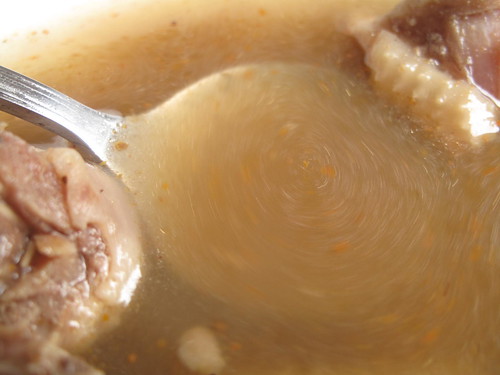
The components of the soup begin to dance, a sort of victory, marital celebration – loathe to dive onto the spoon but hankering after it at the same time.
The film of oil over the top, glimmers, especially with fluorescent lights. If you look hard enough, you will see strands of Tetrapleura tetraptera.
Though ground, the spices still have coarse bits which separate out into two layers – some sink deep to the bottom like sand on the seafloor and others ride up and are caught, entrained in the liquid and peppering the surface with their varied colours – red, black and brown flecks of deliciousness.
The soup is warm and pleasant on my tongue and in my throat, a slight fishiness without the smelliness. In seconds, I feel my sinuses clear out. There is an appealing saltiness that reeks of being ‘well-seasoned’ without being concentrated seawater. Slightly savory without the intense pungency of African dishes.
To me, that is.
Some other person might disagree.
We all sit – my entire family, drinking up spoon after spoon of bowl after bowl, warmed and united in love. My third culture kids will only have it with chunks of warm baguette, while my husband and I, my cousin who’s visiting and his Welsh wife tuck in true Naija style – warm boiled yam halves and sweet boiled ripe plantain, drizzled with some thick palm oil sludge. Some warm soup later, and a few chunks of meat, it all becomes a Nigerian symphony. We eat, we drink, we talk and we are merry. And all the while, the skies of Holland open up and pour out their waters.
And then I remember that once I made a Chinese style soup with wood ear mushrooms, rice wine, light and dark soy sauce, rice vinegar along with some aromatics – ginger, garlic, spring onions and coriander stems and guess what? It reminded me a lot of pepper soup!
Thank you Joan of Foodalogue for another superb culinary tour. I have enjoyed it, learning, sharing, making new friends and most of all eating.
Thank you very much! Lots of love….and guess what? You could say ‘Coming to America‘. Well ‘Coming to Houston’ would be apt, but more on that later. Lots of love and please visit Joan at Foodalogue tomorrow to see what the other fantastic dishes from bloggers the world over.

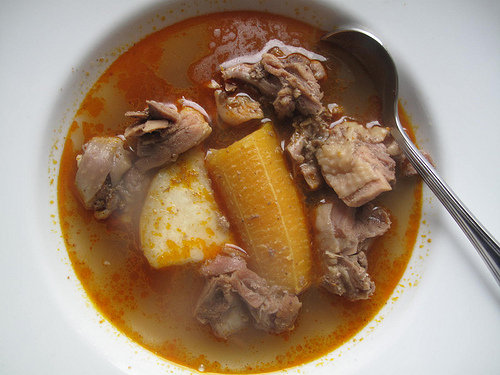
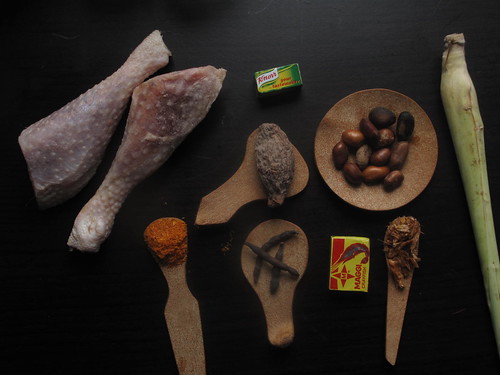
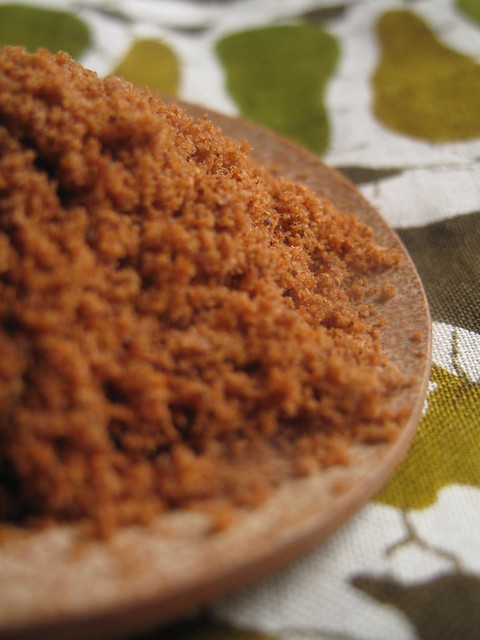

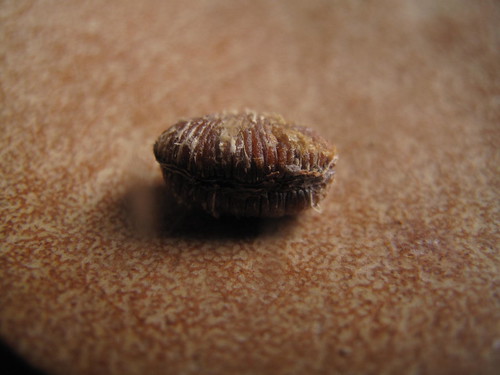
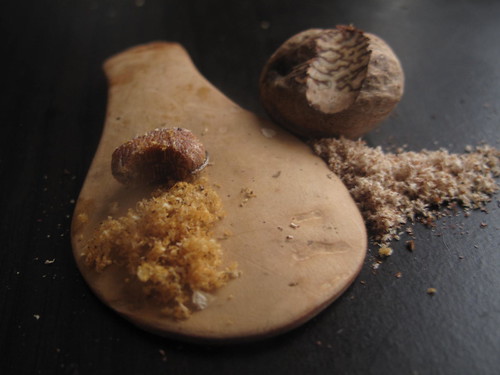
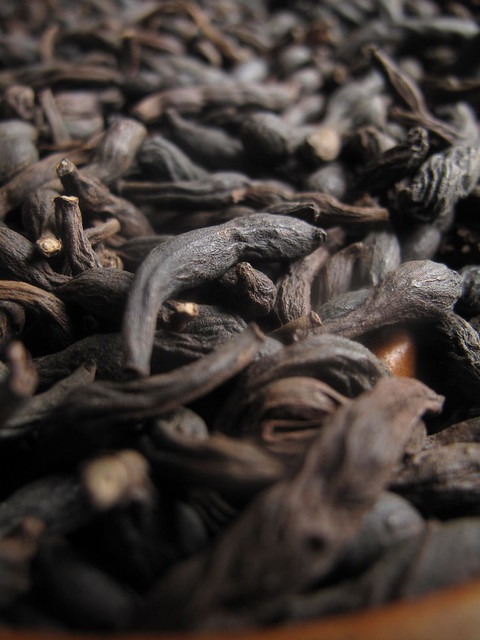
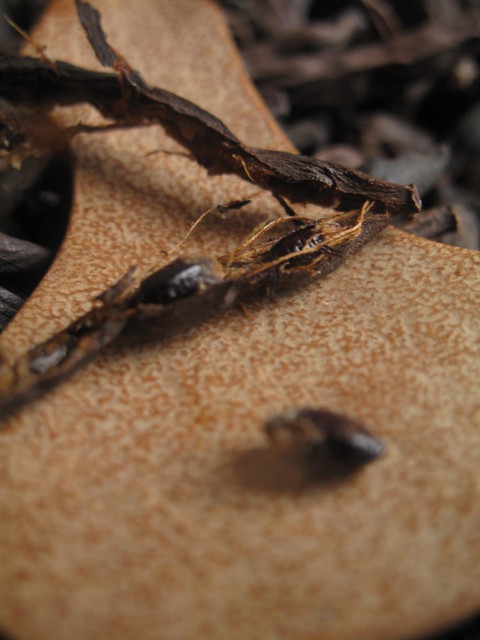


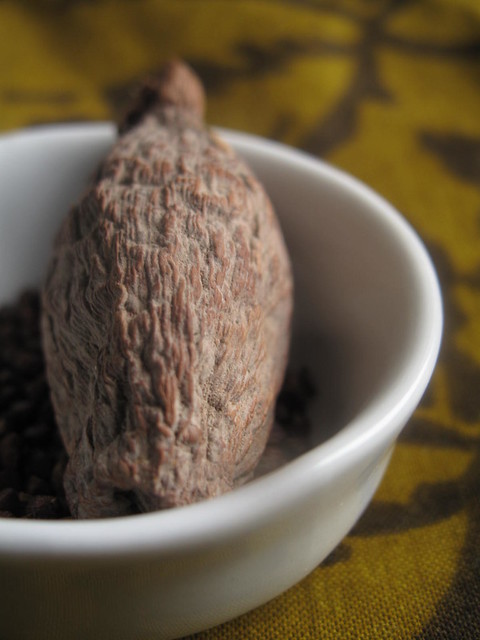
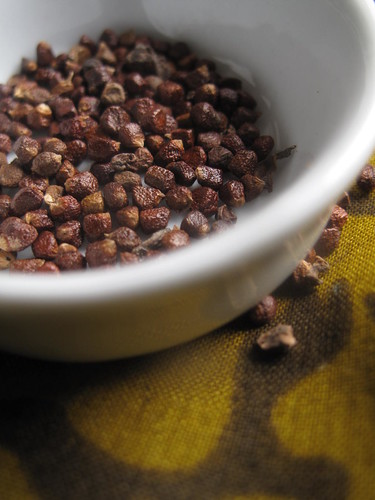
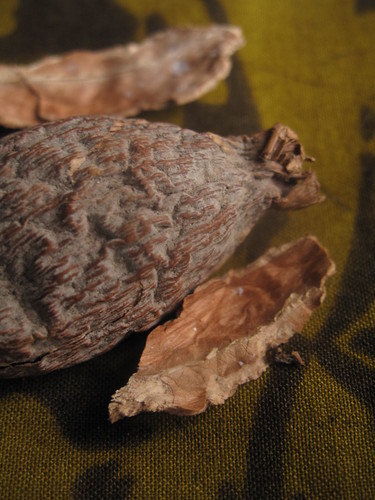
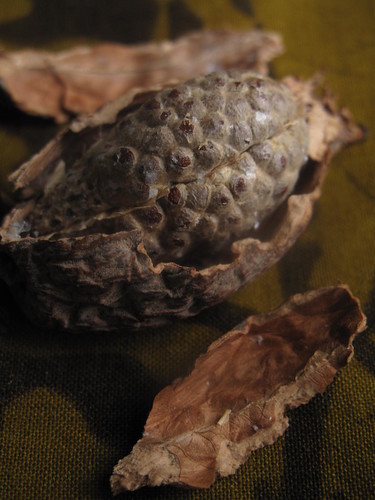
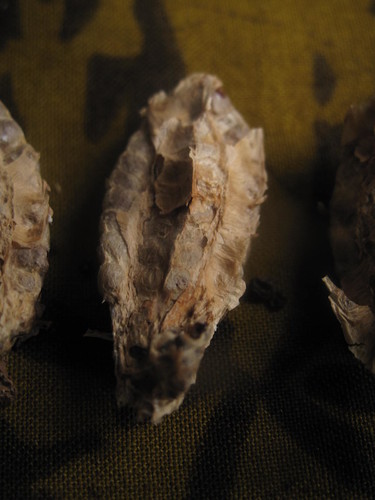
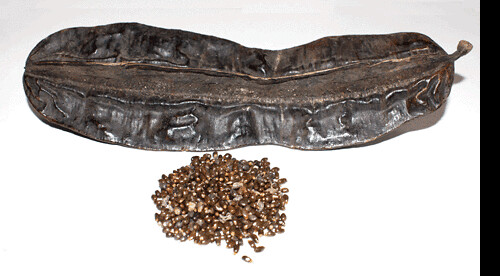
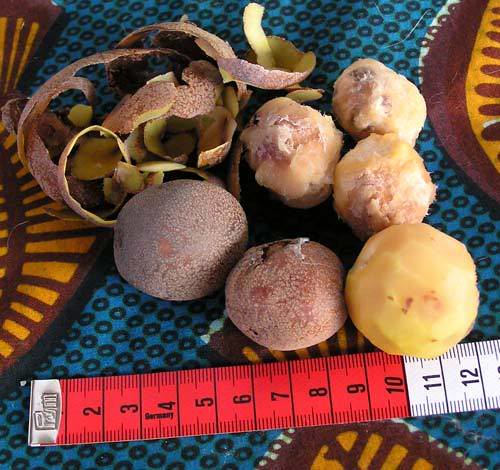
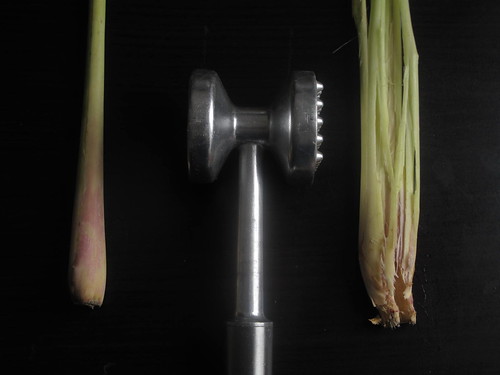
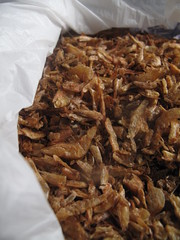
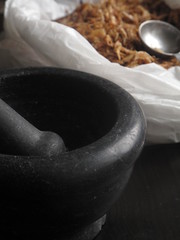

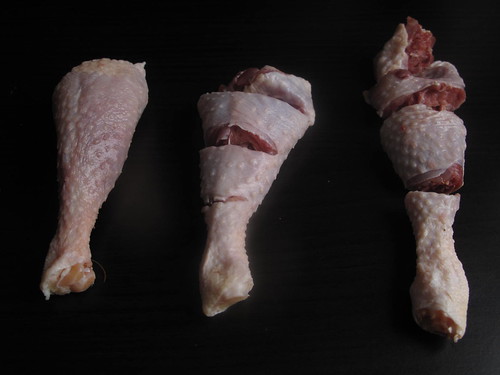
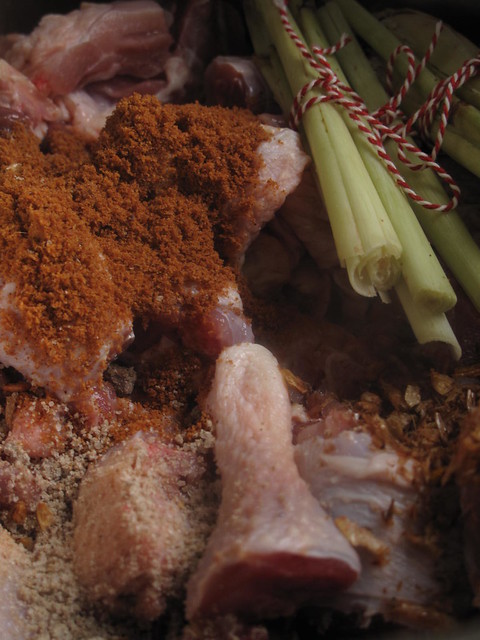
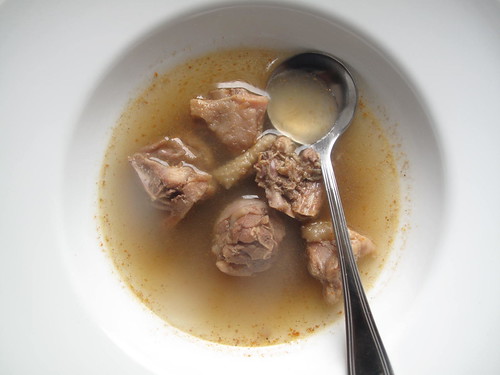
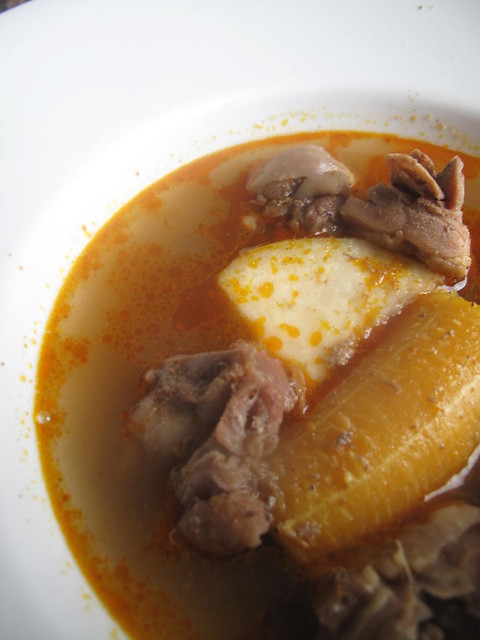


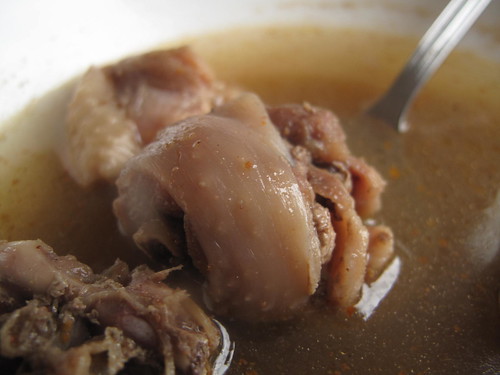
Leave a Reply